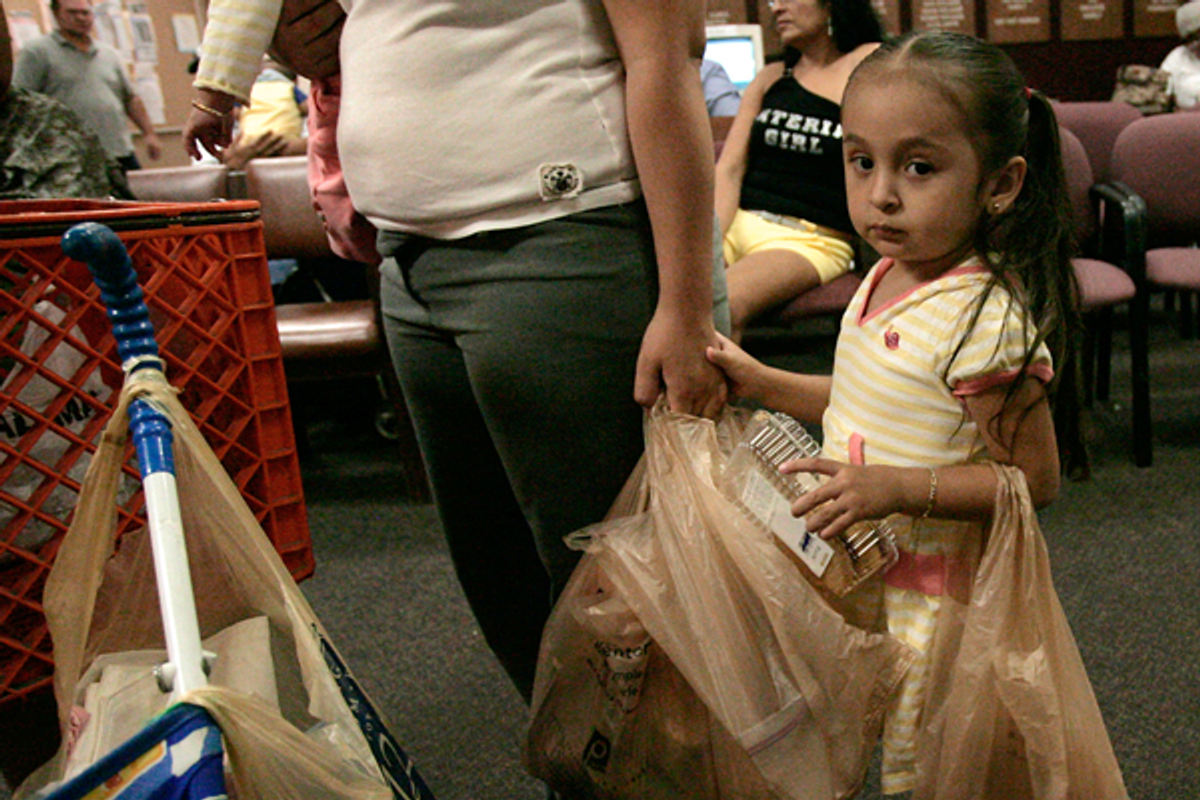A $36 reduction in a family's monthly food budget may not sound like much, but a Friday piece in the New York Times breaks down recent cuts to the Supplemental Nutrition Assistance Program in terms of what it means for millions of American families who are currently living in poverty: "One gallon of milk for the kids instead of two. No fresh broccoli for dinner or snacks to take to school. Weeks of grits and margarine for breakfast."
The largest cut to the food assistance program since Congress passed the first Food Stamps Act in 1964 has also left many of these families, previously able to get by on the little assistance they were getting from the program, seeking additional help from local soup kitchens and food banks.
The mood on the ground is dire, according to Sister Noreen Buttimer, a nun who works at a soup kitchen in Charleston, S.C. “People at this level of need are already going hungry. It’s frightening how we think about the poor,” she told the Times.
The reduced funding has impacted about one in seven American families, and the situation could become even more desperate as more cuts may soon be on the way.
More from the Times:
In the 2010 fiscal year, 40.3 million people were enrolled [in food assistance programs]. Two years later, that number jumped by 16 percent. Just over 45 percent of those getting food stamps are children, according to the Agriculture Department.
Food stamps are likely to be cut more in the coming years if Congress can agree on a new farm bill, which House and Senate negotiators began tackling this week. The Republican-controlled House has approved cutting as much as $40 billion from the program by making it harder to qualify. The Democratic-controlled Senate is suggesting a $4 billion cut by making administrative changes.
To poor families trying to stretch a couple hundred dollars into a month’s worth of groceries, all the talk about stimulus packages, farm subsidies and congressional politics means little. It is all about daily survival at the grocery store.
“We’ll be on our last $3 at the end of the month,” said Rafaela Rivera, 34, a home health aide who earns $10 an hour.
Ms. Rivera’s family of four saw their food stamps reduced by $36, to $420 a month. They pay rent and other expenses using her income and her husband’s disability check, and they supplement food stamps with bags of fresh vegetables, chicken and other groceries from a food pantry.
“It’s going to be hard,” she said. “Our last week is going to be tight tight.”

Shares